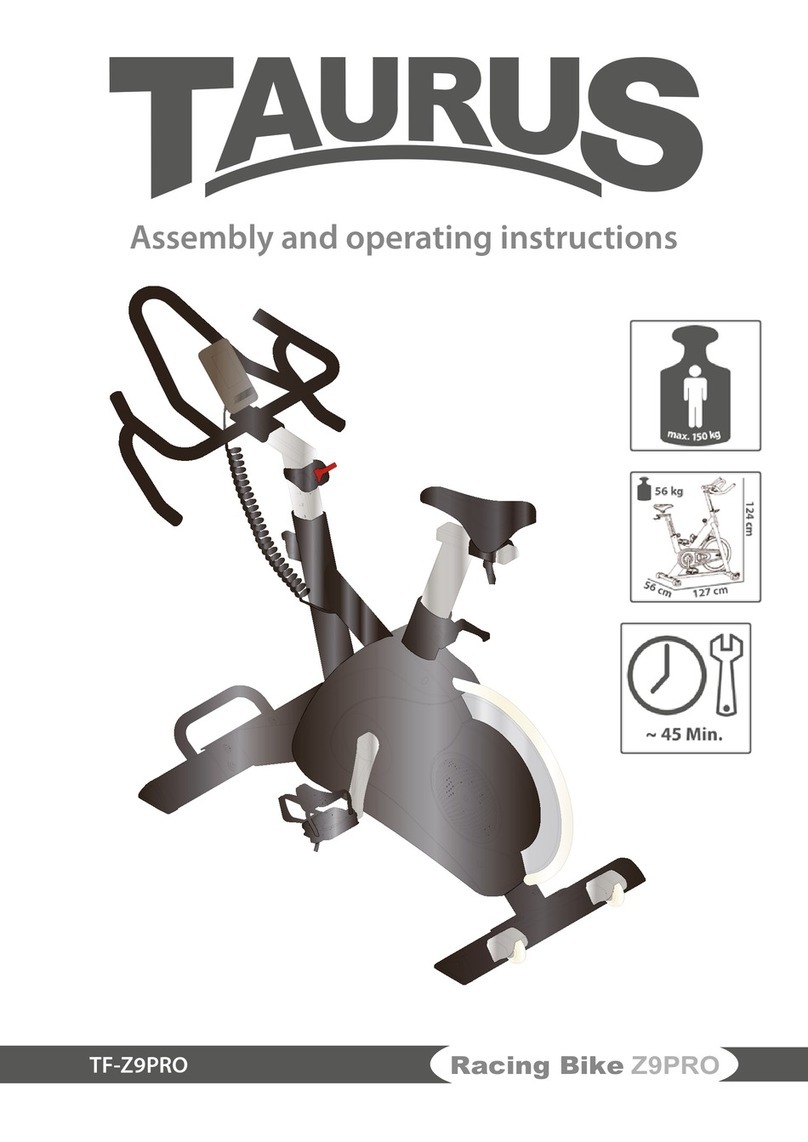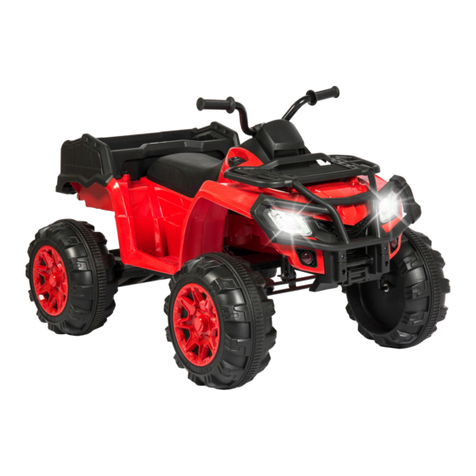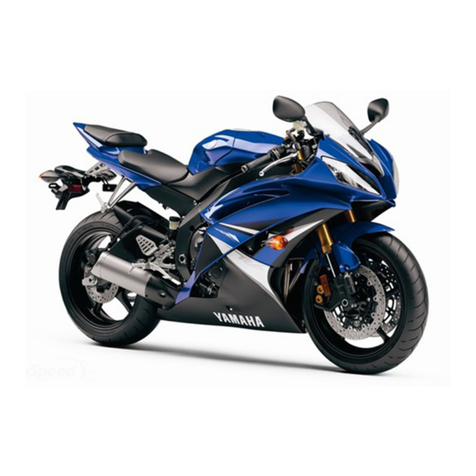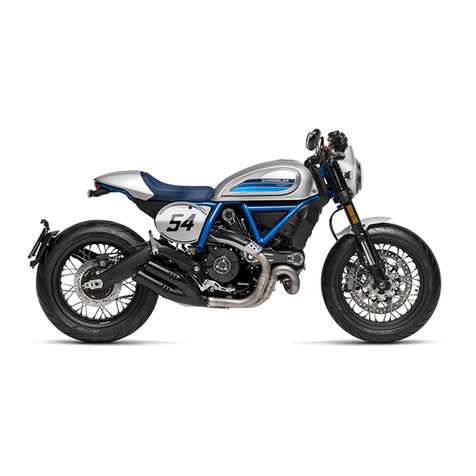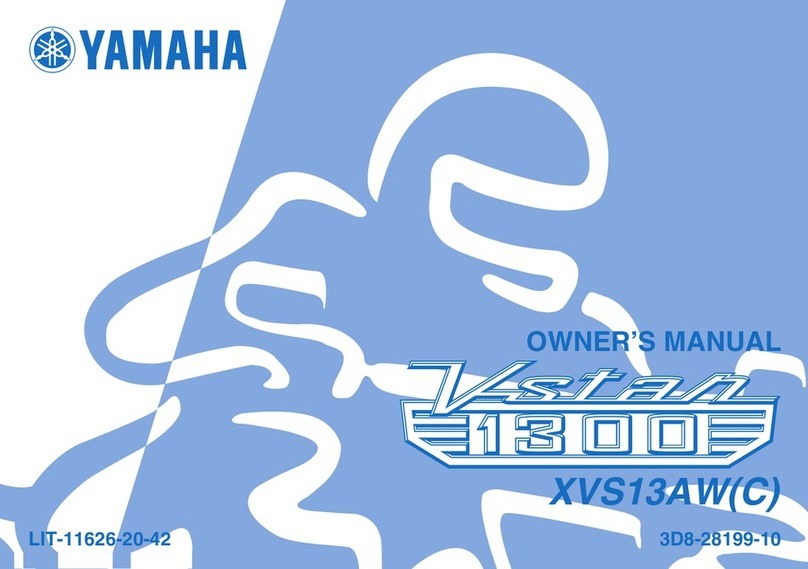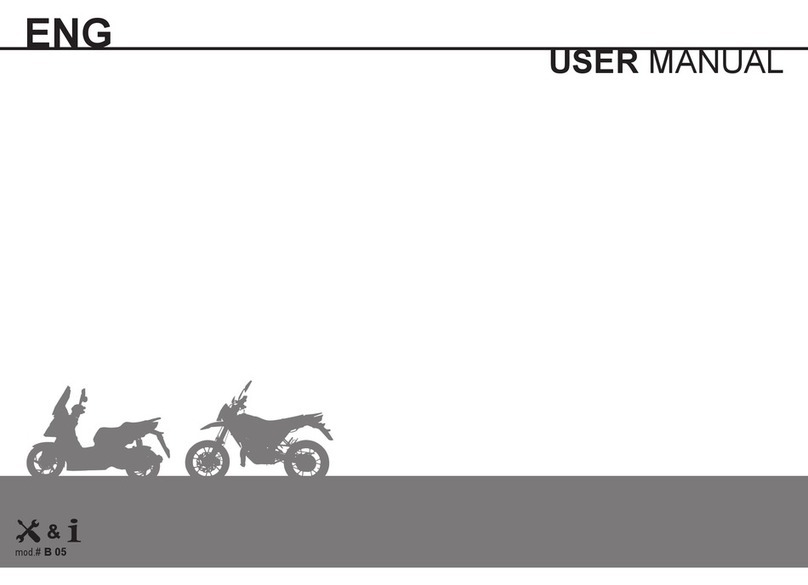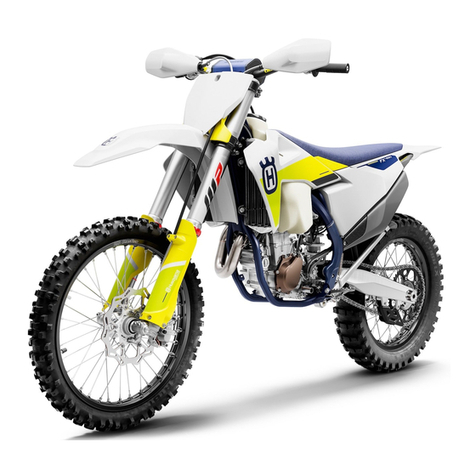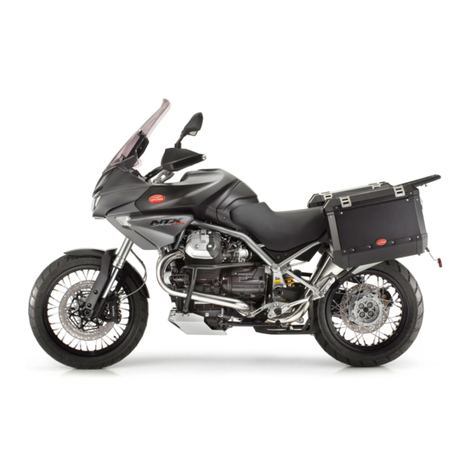Taurus Racing Bike Z9 User manual

Racing Bike
Z9
TF-Z9
Assembly and operating instructions
TFZ901.02

Z9
2

Z9
3
Dear Customer,
Thank you for deciding for a high-quality training equipment of the brand Taurus, the brand that
makes athlete‘s hearts beat faster. Taurus oers a wide range of home tness equipment like elliptical
cross trainers, ergometers, tread-mills and rowing machines. Taurus equipment is the optimal
equipment for all those who want to train at home independent of goals and tness level. For further
information please visit www.sport-tiedje.com or www.taurus.de.
SAFETY NOTICE
Please read all of the instructions carefully before assembly and rst use. These
instructions are intended to ensure speedy assembly and explain safe usage. Make
sure that all people exercising with the equipment (in particular children and
persons with limited physical, sensory, mental or mo-tor capabilities) are informed
about these instructions and its content in advance. In case of doubt, a responsible
person must supervise the use of the equipment.
This equipment has been manufactured according to the latest safety knowledge. As far as possible,
potential safety hazards which could cause injury have been eliminated. Make sure to follow the
instructions carefully and that all parts are securely in place. If required, read through the instructions
again to correct any mistakes.
Please pay close attention to the safety and maintenance instructions given here. The contract
partner cannot be held liable for damage to health, accidents or damage to the equipment when it
is not used in accordance with these instructions.
The equipment is only suitable for use at home. The equipment is not suitable for semi-professional
(e. g., hospitals, clubs, hotels, schools, etc.) and commercial or professional use (e. g., health clubs).
Retain these instructions in a safe place for future reference, maintenance or when ordering
replacement parts.

Z9
4
6 DISPOSAL 27
7 ORDERING ACCESSORIES 27
8 ORDERING SPARE PARTS 28
8.1 Service hotline 28
8.2 Serial number and model name 28
8.3 Parts list 29
8.4 Exploded drawing 33
CONTENTS
1 GENERAL INFORMATION 5
1.1 Technical data 5
1.2 Personal safety 6
1.3 Electrical safety 7
1.4 Set-up place 7
2 ASSEMBLY INSTRUCTIONS, MAINTENANCE AND CARE 8
2.1 General instructions 8
2.2 Errors and error diagnosis 9
2.3 Maintenance and service calendar 9
3 ASSEMBLY 10
3.1 Assembly instructions 10
3.2 Equipment setting 15
4 OPERATING INSTRUCTIONS 18
4.1 Console display 18
4.2 Button function 19
4.3 Turning on and setting the equipment 19
4.4 Programmes 19
4.4.1 Manual programme 20
4.4.2 Training programmes 20
4.4.3 User-dened programme 21
4.4.4 Target heart rate 22
4.4.5 Recovery heart rate 22
4.5 Heart rate measuring 23
5 WARRANTY INFORMATION 25

Z9
5
1 GENERAL INFORMATION
1.1 Technical data
LCD display of
+ speed in km/h
+training time in min
+training distance in km
+cadence (rotations per minute)
+calories burnt
+heart rate (when using a chest strap)
+Watt
Total number of training programs: 17
Pre-set programs: 12
Heart rate controlled programs: 4
User dened programs: 1
Balance mass: 14 kg
Transmission ratio: 1:5.3
Weight and dimensions:
Article weight (gross, including packaging): 56 kg
Article weight (net, without packaging): 52 kg
Packaging dimensions (L x W x H): approximately 120cm x 24 cm x 92 cm
Set-up dimensions (L x W x H): approximately 1270 mm x 560 mm x 1240 mm
Maximum user weight: 150 kg/330 lbs

Z9
6
1.2 Personal safety
+Before you start using the equipment, you should consult your physician that this type of exercise is
suitable for you from a health perspective. Particularly aected are persons who: have a hereditary
disposition to high blood pressure or heart disease, are over the age of 45, smoke, have high cholesterol
values, are overweight and/or have not exercised regularly in the past year.
+Please note that working out excessively can seriously damage your health. Please also be aware that
heart rate monitoring systems might be imprecise.
+The equipment may only be used for its intended purpose; that means for indoor cycle workouts for
adults.
+Any other usage is prohibited and potentially dangerous. The contract partner cannot be held liable for
damage resulting from improper use.
+The equipment is strictly for use by one person at a time.
+Children should not be allowed unsupervised access to the equipment.
+Before starting your training, make yourself familiar with all of the equipment‘s functions and setting
options. Have an expert explain the correct usage of the product to you.
+The machine is NOT equipped with a free-run system. This means: If you move the ywheel, the pedals
move as well. In order to avoid knee injuries, do not try to stop the equipment by pedaling backwards.
Also do not try to take your feet from the rotating pedals. The motion can only be stopped by pressing
the emergency brake or through a controlled reduction of the pedal rate.
+Only use this indoor cycle with high pedal rotations or while standing after you have practiced with
lower pedal rotations.
+Never bring your hands or other objects near moving parts.
+Do not turn the pedal cranks by hand. Do not bring your hands or arms into contact with the drive
mechanism.
+Make sure that nobody is in the range of motion of the equipment while exercising.
+Keep your hands, feet and other body parts, hair, clothing, jewelry and other objects well clear of
moving parts.
+During use, wear suitable sports clothing rather than loose or baggy clothing. When selecting sports
shoes, think about the suitability of the sole – preferably this should be made of rubber or other non-
slip materials. Shoes with heels, leather soles, studs or spikes are not suitable. Never work out in bare
feet.
+At the rst signs of weakness, nausea, dizziness, pain, diculty in breathing or other abnormal
symptoms, stop your workout immediately and, if necessary, consult your physician.
+Without prior agreement from your authorized contract partner, opening the equipment is prohibited.

Z9
7
1.3 Electrical safety
+The equipment requires a 220 - 230V / 50 Hertz mains power supply.
+The equipment should be connected directly to a grounded plug socket only by means of the power
cable supplied. The use of multi-socket adapters or similar is not recommended. Extension leads must
comply with local electrical safety guidelines. Always fully unwind the power cable.
+The outlet should be secured with a fuse with a minimum value of„16 amperes, slow“.
+In order to reduce the risk of an electric shock, always unplug the equipment from the mains socket
immediately after your workout, before assembly or dismantling, and before maintenance or cleaning.
Do not pull on the cable.
+When plugged in, do not leave the equipment unattended at any time. To avoid use by anyone
unfamiliar with the operating instructions, the power cable should be removed when the equipment is
not in use.
+Keep the power cable away from heat, oil and sharp edges. Do not route the power cable underneath
the equipment or under a carpet or rug, and do not place any objects on top of it.
+Make no modications to either the power cable or the mains plug.
+If the power cable or the plug are damaged or defective, contact your authorized contract partner. Do
not use the equipment in the meantime.
+Do not keep electrical devices (e. g., mobile phones) in close proximity to the console or the control
electronics, otherwise display values (e. g., pulse measuring) could be inaccurate.
1.4 Set-up place
+The equipment should only be used indoors, in a suciently heated and dry area (ambient temperature
between 10°C and 35°C). The equipment should not be used outdoors or in rooms with high humidity
(over 70%) like swimming pools. The equipment should only be stored in surroundings with an ambient
temperature between 5°C and 45°C.
+The training room should be well ventilated during training and not be exposed to any draughts.
+Choose a location in which to place the equipment such that there is enough free space/clearance
to the front, the rear and to the sides of the equipment (at least 1.50 m). Furthermore, the equipment
should not be set up in main entrances or on escape routes.
+Always keep the power cable away from hot surfaces and grounds and make sure that the cable is not
stuck somewhere or becomes a„trip hazard“.
+No objects of any type should be inserted into the openings of the equipment.
+The equipment should be placed on a level and solid surface, any unevenness in the oor should be
leveled out.
+A oor protective mat / equipment underlay can help to protect high-quality oor coverings (parquet,
laminate, cork, carpets) from dents and sweat and can help to level out slight unevenness.

Z9
8
2 ASSEMBLY INSTRUCTIONS, MAINTENANCE AND CARE
2.1 General instructions
+Please check if all parts and tools belonging to the equipment are included in the delivery and if there
is any transport damage. If there are any complaints, please contact your contract partner directly.
+Some of the nuts and bolts to be used in assembly are already pre-mounted in order to make set-up as
easy as possible.
+The equipment must be assembled by adults. In case of doubt, ask for assistance from another person
with technical skills.
+Keep children away from the equipment during assembly, because small parts are included in the
delivery and may be swallowed.
+Make sure that you have enough space (at least 1.50 m) in every direction during assembly.
+Do not leave any tools and packaging materials like plastic sheeting laying around to avoid danger of
suocation for children.
+Assemble the equipment on an underlay mat or on the cardboard packaging in order to avoid damage
to the equipment and to the oor (scratches).
+Before starting assembly, all individual parts should be placed on the oor next to each other.
+Read the assembly instructions carefully and assemble the equipment according to the illustrations.
Proceed carefully and cautiously.
+First loosen all parts and check for their correct tting. Then tighten the screws using a tool.
+Modications to the design or improper repairs may pose a hazard to the user and should not be
carried out. The product warranty may be void as a result.
+Only authorized service technicians are permitted to carry out all servicing and/or repairs – it excludes
maintenance and care.
+Damaged or worn components may impair your safety and the lifespan of the equipment. You should
therefore immediately replace damaged or worn components. Please contact your contract partner in
such a case. The equipment should no longer be used until it has been repaired. When needed, only
use original Taurus spare parts.
+Check the tightness of all screw connections once a month.
+In order to be able to guarantee the constructively dened safety level of this equipment, we
recommend having the equipment regularly maintained (at least once a year) by specialists (service
technicians of your contract partner).
+The equipment may be cleaned of dust, dirt and sweat using a damp cloth. The use of solvents should
be strictly avoided. Also, make sure that no liquids (e. g. sweat) get into the openings of the equipment
(e. g. console).

Z9
9
2.2 Faults and Troubleshooting
The equipment runs through regular quality controls during production. Nevertheless, errors or
malfunctions on the equipment may occur. Individual parts are often the cause of faults and replacement
is usually sucient. Please use the following overview to see the most common errors and how to repair
them. If the equipment still does not work properly, please contact your contract partner.
Problem Cause Solution
Squeaking & cracking noises Loose or too tight screw
connection
Check or lubricate screw
connection
Cracking near the
pedal Loose pedals Tighten pedals
Equipment wobble Equipment is not standing straight Rearrange base
Handlebars/saddle wobble Loose screws Tighten screws
2.3 Maintenance and service calendar
The indoor cycle must be cleaned after every training session with a moist towel (no solvent!) in order
to avoid damage caused by sweat. The following routine work must be executed in the specied time
intervals:
Part Weekly Monthly Annually
Check screws I
Check brake for wear and lubricate
if necessary I
Display console I
Tighten the pedals I

Z9
10
3 ASSEMBLY
3.1 Assembly instructions
The package contains the parts represented in the illustration, including a power cable with mains
plug. If one of the illustrated parts is missing, please contact your contract partner.
x1x1 x1
x1
x1
x1
x1
12
3
13
x1
x1
25L 25R
&
1085 10014
PP
0[ [/3&6
6&37['['
'['[ 7 3&6
+.
3&6
67(3
0 / 3&6
67(3
0/ 3&6
67(3
SFV
Overview
1. Main frame
2. Front base
3. Rear base
10. Saddle
13. Handlebar
14. Console mount
25R. Right pedal
25L. Left pedal
85. Console
100. Mains cable
5. Screw
6. Spring washer
7. Washer
12. Adjusting knob
41. Cable connector
86. Screw
Tools

Z9
11
Step 1: Mounting the front and rear base
(1) Mount the rear base (3) to the main frame (1) with Allen screws (5), washers (7), and spring washers.
Make that the transport wheels point outwards or away from the equipment.
(2) Mount the front base (2) to the main frame with Allen screws (5), washers (7), and spring washers.
(3) Level out possible unevenness with the adjusting screws (59) on the front and rear base.
1)
2)
M8*1.25*20L(x8)
D15.4*D8.2*2T
D16*D8.5*1.2T
(x8)
(x8)
Step-1
5
6
7
2
15
6
7
3
5
6
7
59

Z9
12
Step 2: Mounting the handlebar and the saddle
The connecting rod (8) and the saddle post (9) are already pre-mounted and both can be innitely adjusted
in height with the knob.
Pay attention to the fact that the safety lines on connecting rod (handlebar) and saddle post must
not be exceeded when adjusting.
Step 3: Mounting the handlebar and the saddle
(1) Mount the handlebar (13) to the handlebar post with the adjusting knob (12).
(2) Mount the seat (10) to the saddle post (9) with the adjusting knob (12) and a screw (97).
1)
Step- 2
8
DOWN
UP
DOWN
UP
89
22 22
1)
Step-3
13 8
9
9
13 8
M5*10L
97 (x1)
12
10
12
10
97
1)
Step-3
13 8
9
9
13 8
M5*10L
97 (x1)
12 10
12
10
97

Z9
13
Step 4: Mounting the console
(1) Mount the console mount (14) to the connecting rod (handlebar) with a screw (86) (g. a).
(2) Insert the console cable (105) through the hole of the console mount (g. b).
(3) Connect the cable (41) (g. c).
(4) Mount the console (85) to the mount with a screw (84) (g. d).

Z9
14
Step 5: Mounting the pedals
Screw the pedals (25R, 25L) very carefully clockwise or counter-clockwise to the pedal crank arms. Some
lubricating grease or oil might facilitate screwing and can avoid damages to the thread. The right as well as
the left pedals are marked with letters R (= right) or L (= left).
Step 6: Mains cable
Connect the mains cable (100) with the equipment and a socket.
1)
2)
tep-5
100
13
15
25L
25R
L
R

Z9
15
Step 7: Transport
The rear base has integrated transport wheels. In
order to move the equipment, stand in front and lift it
until the weight of the equipment is on the transport
wheels. Now you can easily move the equipment.
3.2 Equipment setting
Operating the emergency brake:
Push the emergency brake (34) for safety reasons, whenever it is required to get o the equipment and/or
to stop the ywheel of the equipment.
34

Z9
16
Adjustment
When you take a moment to adjust your indoor cycle correctly to your body, you increase the comfort and
the safety of your training. The indoor cycle oers diverse adjusting possibilities for saddle and handlebar.
Use these adjusting possibilities for an optimal sitting comfort and a maximum training eciency. A wrong
position while training can cause avoidable pain and might increase the risk of injury.
Adjusting the handlebar position
Handlebar height
• The handlebar height can be individually adjusted.
• Start with the adjusting of the connecting rod (handlebar) to the seat height. A higher adjustment of the
connecting rod (handlebar) provides a more upright sitting; a lower adjustment of the connecting rod
(handlebar) provides a posture bend forward.
• Pull the adjusting lever up to adjust the height of the handlebar and push the bar upwards or downwards
as required. Push the adjusting lever down to the locked position to safe the connecting rod (handlebar)
again.
• Do not exceed the adjustments beyond the stop markings.
Horizontal adjustment
• Release the upper adjusting lever on the connecting rod (handlebar) and push the handlebar forward or
backwards as required.
• The horizontal adjustment should be done so that you can comfortably hold the handlebar with a slight
bending of the elbow.
• Do not exceed the adjustments beyond the stop markings.
Hand position
• In order to prevent one-sided stress of muscles, ligaments, and joints, the hand position should be
changed throughout longer training sessions. The handlebar oers dierent possibilities to hold.
Adjusting the saddle position
Saddle height
• Stand beside the saddle post and adjust the saddle to hip height.
• Rotate the pedal crank so that the pedals are in the vertical position.
• Place a foot on the lower pedal and get on the indoor cycle. Your knee should be slightly bent.
• When your leg is stretched too much or the foot does not touch the pedal, the saddle needs to be lowered.
When your leg is bent too much, the saddle needs to be adjusted at a higher position.
• Get o the indoor cycle in order to adjust the height and release the adjusting lever of the saddle post.
Push then the saddle post up or down as required.
• When the saddle is in the desired position, lock the adjusting lever back to the locked position in order to
safe the saddle post.
• Do not exceed the adjustments beyond the stop markings.

Z9
17
Horizontal adjustment
• Get on the indoor cycle and rotate the pedal crank to the 3-and-9 o‘clock position. The horizontal
adjustment of the seat is correct, when the knee joint of the leg, which points forward, is above the axle of
the pedal.
• Otherwise, get o the indoor cycle to adjust the saddle in horizontal direction forwards or backwards.
Release the adjusting lever of the saddle and push the seat forwards or backwards as required. Fix the lever
then again.
• Do not exceed the adjustments beyond the stop markings.
ATTENTION
• For safety reason, do not pedal backwards while the braking resistance is set.
• The equipment is NOT equipped with a free wheel system. That means: When the ywheel
rotates, the pedals rotate as well. In order to avoid knee injuries, do not try to stop the
equipment by pushing backwards on the pedals. Do not try as well to take your feet from the
rotating pedals. The movement can only be stopped by using the emergency brake or by a
controlled reduction of the cadence.

Z9
18
4 OPERATING INSTRUCTIONS
4.1 Console display
Time Setting from 0:00 to 99:00, Display from 0:00 to 99:59
Speed Display from 0.0 to 99.9
Distance Setting from 0.00 to 99.90 km, Display from 0.00 to 99.99
Calories Setting from 0 to 9990, Display from 0 to 999
Heart rate Setting from 0-30 to 230, Display from 30 to 230
RPM Display from 0 to 999
Watt Setting from 10 to 350, Display from 0 to 999

Z9
19
4.2 Button function
Recovery Test for determining the recovery heart rate.
Reset Hold the button for two seconds to start the console again. Return to the main
menu while setting.
Down Selecting programmes and value settings.
Up Selecting programmes and value settings.
Start/Stop Start and stop your training.
Mode Conrming settings.
4.3 Turning on and setting the equipment
When you turn on the console, a signal sounds for a second and the display lights up completely for two
seconds (g. 1). Then the wheel diameter is shown (g. 2). Finally, the display switches to the standby mode
(g. 3).
4.4 Programmes
Press the arrow buttons to choose one of the following training programmes:
Manual —› Program —› User —› Target HRC (target heart rate). Press MODE to conrm your selection.
Figure1 Figure 2 Figure 3

Z9
20
4.4.1 Manual programme
When you have chosen the manual programme (MANUAL), you can set various target values for: time,
distance, calories and watt. The rst three are being counted down. For example if you set your target
distance to 20 km, the system will count down until zero is reached and an acoustical signal will be heard
(g. 4 & g. 5).
In the watt programme the watt value is constant. The performance in watt is the product of pedal speed
and resistance level (if you are pedaling very quickly, the watt value will be high). When you pedal faster,
the resistance level will be reduced in accordance with the priorly set watt value. This is to keep the watt
value constant (g. 6).
Each time you have set a target value, please press MODE to conrm your entry and to continue with the
next setting. Your training will be stopped once one of the set target values is reached. If you would like to
start a training session without setting any target values, please press START/STOP.
4.4.2 Training programmes
When you have chosen training programmes (Program), you can
select one of 12 dierent training proles (P1-P12) with the arrow
buttons (g. 7). Once you have chosen a prole, P1, P2, P3, etc. is dis-
played. Press START/STOP to start the training.
The training resistance can be adjusted while exercising.
Figure 4 Figure 5 Figure 6
Figure 7
Other manuals for Racing Bike Z9
1
Table of contents
Other Taurus Motorcycle manuals
Popular Motorcycle manuals by other brands
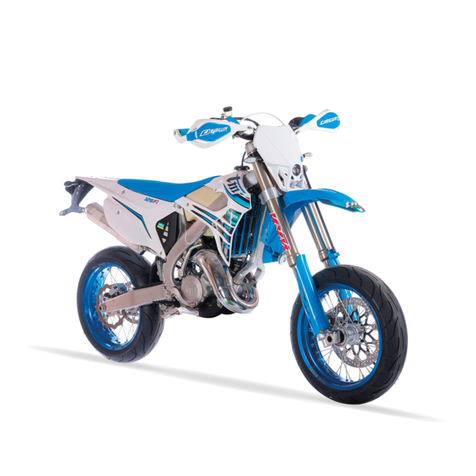
TM RACING
TM RACING 125 SMR 2022 Use and maintenance manual
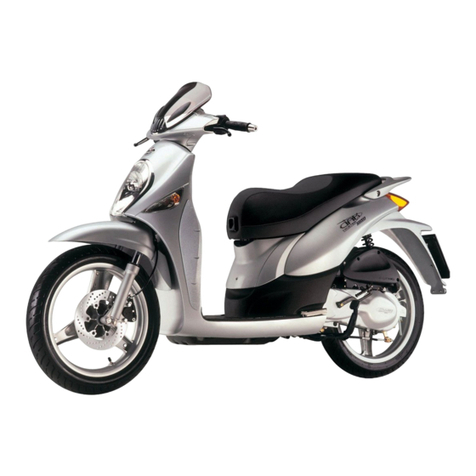
Malaguti
Malaguti CIAK MASTER 50-4T ELECTRIC SYSTEM TROUBLESHOOTING
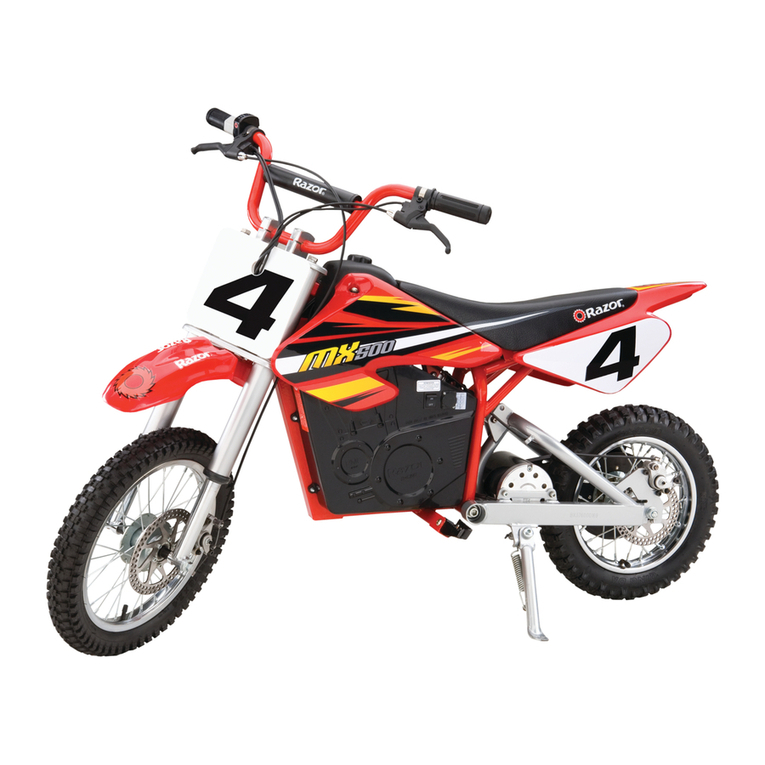
Razor
Razor MX350 15128050 owner's manual
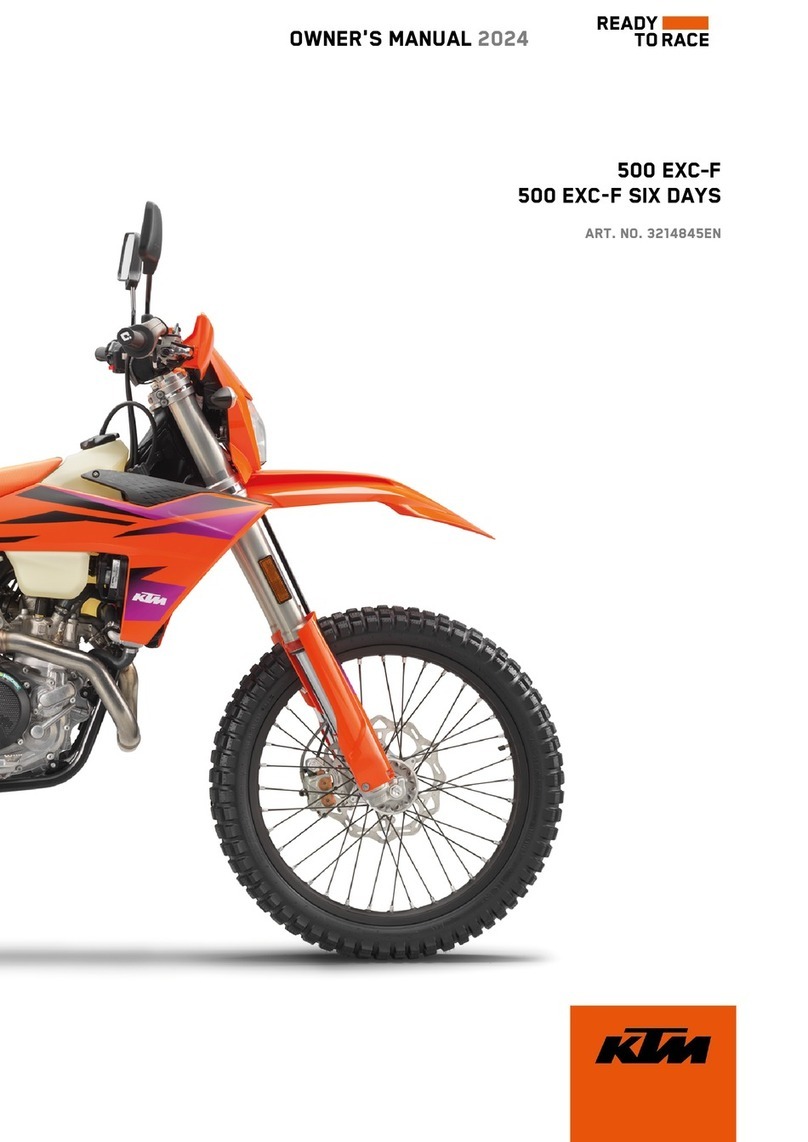
KTM
KTM 500 EXC F 2024 owner's manual

ZONGSHEN
ZONGSHEN ZS125-86 Service manual

Ducati
Ducati SUPERBIKE 1098S Tricolore Use and maintenance manual
